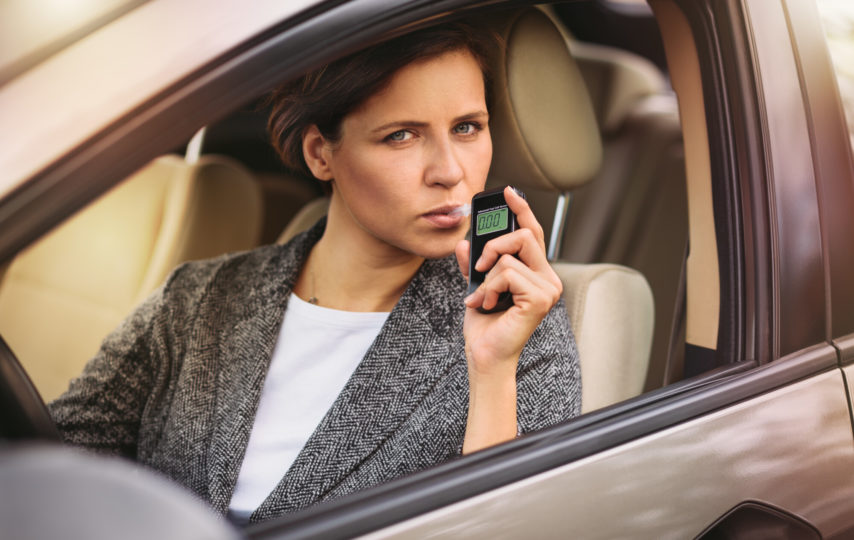In the US, one deadly motor vehicle crash involving a drunk driver occurs every 50 minutes. That sums up to at least 29 fatalities per day that involves an alcohol-impaired driver.
A drunk driver, in turn, is one who drives with a blood alcohol content (BAC) exceeding the legal limit. Law enforcers can determine this with a blood alcohol level test. They usually do so with a breath test, also known as the breathalyzer, but they can also test a person’s blood or urine.
Because of its legal and safety implications, you should learn as much as you can about BAC levels. We rounded up the key facts below, so read on to discover what can happen if you drink and drive.
Drug and Alcohol Rehab Centers In Arkansas. Arkansas has its share of drug abuse. In 2010-2011, Arkansas was one of the top ten states with worse cases of drug abuse. In 2005-2013, the number of people who sought treatment for drug addiction in Arkansas was more than the national average. 374 people died as a result of direct abuse of drugs in Arkansas in 2010. This translates to 12.8 per 100, 000 persons. This is quite fatal and needs addressing. It was slightly lower than the national rate, which was at 12.9 out of 100,000 persons. Despite investing heavily in fighting drug abuse, the statistics keep on increasing. The increase in drug-related deaths has been alarming. In 2017, the rate of drug-related deaths had risen to 15.5 in every 100,000 persons in the state. Opioids caused the majority of overdose deaths. Opioid drugs, alcohol, heroin, and marijuana are the drugs that are popularly abused in Arkansas. Treatment Centers in Arkansas If you are ready to change your lifestyle and live a fulfilling life, it’s important to look for a treatment center to help you in the process. We are the best addiction treatment center in Arkansas, and you can be assured our staff will take care of you throughout the journey. Contact us today (844) 377-8070 for more information about our treatments.
What Is Blood Alcohol Content?
The term blood alcohol content is a measurement of alcohol in the bloodstream. It’s also known as blood alcohol concentration, or simply BAC.
In the United States, gram% is the metric used to quantify a person’s BAC level. A BAC of 0.08 gram% means that 0.08% of a person’s blood consists of alcohol.
Why Does BAC Matter?
Blood alcohol concentration levels are accurate indicators of alcohol impairment. The higher a person’s blood alcohol content is, the greater their risk of getting into an auto accident.
Researchers found that a BAC of below 0.05% can be enough to diminish a person’s balance and coordination. Worse, a BAC of 0.05% to 0.079% can already raise a person’s risk of getting into a fatal crash by 7 to 21 times.
What Is the Legal BAC Limit in the US?
In 49 states, the legal blood alcohol concentration limit for adult drivers is below 0.08%. The odd one out is Utah, as it has the most stringent blood alcohol level driving laws in the nation.
In the Beehive State, it’s already illegal to drive with a BAC of 0.05%. Utah was also the first-ever state to lower its BAC limit from 0.10 to 0.08 for impaired driving back in 1983.
Do note that the legal BAC limit for drivers under 21 is way lower than for adults.
In many states, such as Alabama and Colorado, it’s illegal for young drivers to operate a vehicle with a BAC of 0.02%. In others, such as Alaska and D.C., drivers under 21 must not drive if they have any measurable alcohol in their blood.
What Factors Can Impact BAC?
The specific type of alcoholic beverage you drink is one of the key factors that influence your BAC.
In the US, one standard drink has about 14 grams of pure alcohol. An example of a standard drink is one serving of a 12-ounce beer with a 5% alcohol content. Another is a 5-ounce glass of wine with a 12% alcohol content.
Taken within an hour, a standard drink can elevate your BAC to between 0.02% and 0.04%. However, drinks with more pure alcohol can make your BAC level go higher than a standard drink.
The type of alcoholic beverages you consume is just one part of the equation, though. Here are the other factors that can affect your BAC level.
Gender
The female body has a lower water content than a male body of similar weight. This is why women can have a higher BAC level than men, even if they consume the same quantity of alcohol.
For example, a 140-pound woman who consumes two standard drinks can have a BAC of 0.08%. By contrast, a 140-pound man who’s had the same number of drinks would only have a 0.05% BAC.
Weight
The higher a person’s body mass, the more water content their body usually has. The higher the water content, the likelier that the ingested alcohol can get diluted. For this reason, people with a higher body mass often register with lower BAC levels.
How Much You Drink Within an Hour
The body metabolizes alcohol at a rate of about 0.015 grams per 100 milliliters per hour. This equates to a 0.015 hourly reduction in BAC levels.
Using those figures, a 140-pound woman who takes two standard drinks and then stops for an hour would have a 0.065 BAC. A 140-pound man would have a 0.035 BAC under the same circumstances.
What Else You Ingest
If you’ve ever wondered how to lower BAC levels, the answer is a combination of food, water, and time.
Food helps slow the absorption of intoxicating drinks in the body. It does so by keeping alcohol from quickly getting into the small intestine. Therefore, eating before you drink can help keep BAC levels from skyrocketing.
What Are the Legal Consequences of Exceeding BAC Limits?
Exceeding the BAC limit can be a DUI felony or a misdemeanor. It can lead to a charge for driving under the influence (DUI) or driving while intoxicated (DWI).
Most states consider a first DUI/DWI offense as a misdemeanor. In such cases, license suspension is a common punishment. On top of that are fines, imprisonment, vehicle impoundment, or community service.
In some states, exceeding BAC limits can even make or break one’s citizenship. For example, a New Jersey DWI offense can result in the denial of a citizenship application. For a deeper look at NJ’s immigration laws, check out this page to learn more from Lee and Garasia Law Firm.
How Can a BAC-Related Misdemeanor Turn Into a Felony?
This depends on the state where the DUI/DWI driver caused the accident. However, the severity of the accident’s aftermath is one of the chief deciding factors. A driver’s record can also influence whether a charge can become a felony.
DUI/DWI With Injuries or Fatalities
A misdemeanor can get elevated to a felony if an at-fault DUI/DWI driver injures or kills someone in a car crash. Unfortunately, fatal crashes involving drivers with a BAC of at least 0.08% are common. Of the 36,096 motor vehicle accident deaths in 2019, 28% involved such motorists.
DUI/DWI With an Invalid License
A DUI/DWI misdemeanor charge can also become a felony if the impaired driver broke other laws. An example is a drunk driver operating a vehicle with a suspended license. Since the driver broke two laws, the law may regard their actions as felonious.
The same can happen to DUI/DWI drivers caught driving on a revoked or canceled license. Drivers without an actual license can also get slapped with a felony charge.
Don’t Drive if You Have a BAC of More Than 0.00%
As you can see, even a slight increase in your blood alcohol content can already impair your senses. A single standard drink can be enough to make you stumble or lose your balance. So, imagine how much worse it can be if you’ve had a lot to drink and you slip behind the wheel.
So, for everyone’s safety, don’t drive if your BAC is over 0.00%.
Interested in more legal, automotive, and even safety guides like this? Then please feel free to browse our other informative news and blog posts!













